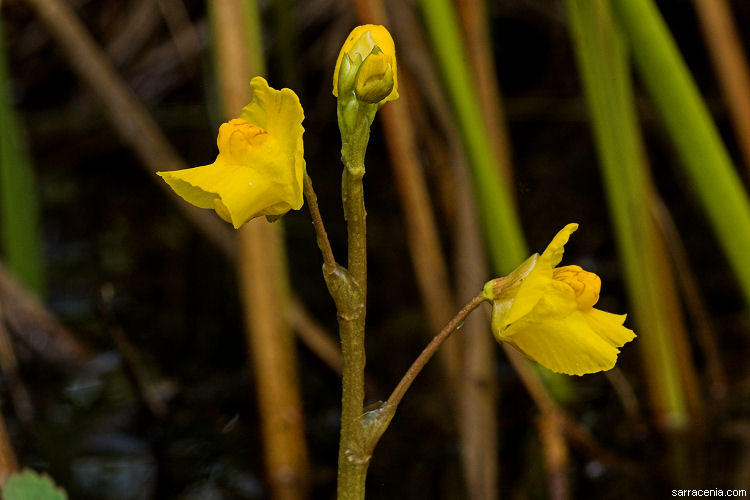
A relative giant!
This mighty specimen of Utricularia macrorhiza
contrasts with the daintiness and delicacy of
Utricularia minor. Notice that it
curls the lateral edges of its petals downwards just like U. minor, but it has such an extravagant red-veined
palate bulge and hooked spur that you easily overlook this detail.
After I took this photograph, I pulled a few specimens out of the water so I could take some aquatic images.
I trudged the specimens back to the boat launch where my car was
parked. As I crossed the beaver dam, I scared up an exceptionally pretty valley
garter snake with red dots along its side (Thamnophis sirtalis subsp. fitchi) that was hanging around on the dam.
I had startled a similar garter snake on the way out--apparently
this was a good place to hang out if you were a snake.
This is a good point to tell you about my theory of besodden
body appendages and why you should never expect to stay dry when exploring aquatic Utricularia
habitats. For each
species of Utricularia you encounter, expect a major body appendage to become wet. If you see one species
then both your arms are expected to be completely wetted. (For some reason, both arms are included as one entity
in this theory--I believe the underlying cause for this correction is due to special relativistic effects.)
If you see a second species, the equivalent of a full-leg dousing is in order. If a third species is seen,
your second leg--and any connecting items beneath the belt--are fully soaked. If you are lucky enough to see four
or more aquatic Utricularia species, you are officially swimming-wet.
This theory assumes you are not particularly interested in getting wet. On
the other hand, if you are like me and insist on observing plants in detail,
a single species is likely to result in so many belly-observations and the like that
a full dousing is entirely feasible.